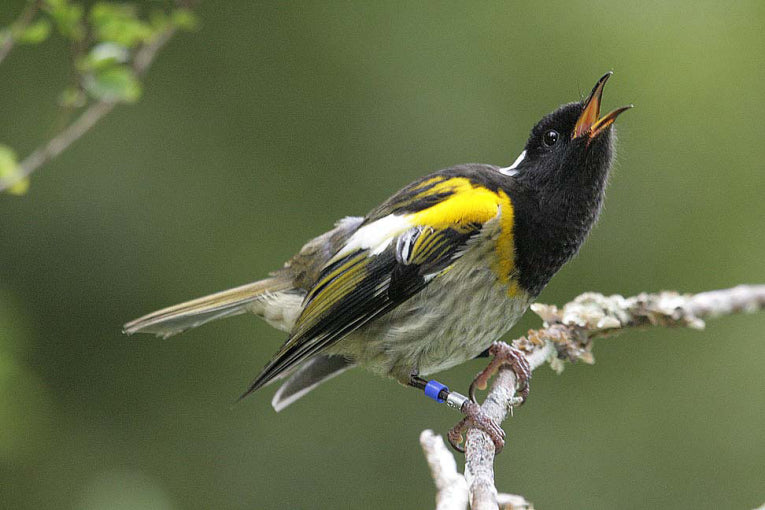Condition of males and females plays a part in breeding at all times, in every animal species. Leila K. Walker and her colleagues worked to prove, in their paper in the
Proceedings of the Royal Society B: Biological Sciences, that early life and diet are critical. Martin Stevens, Filiz Karadas, Rebecca M. Kilner and John G. Ewen collaborated with Leila in the Universities of Cambridge and Yuzuncu Yil, in Van, in Turkey and the Zoological Society of London.
They called the plumage of birds, "the window," on the past history of their diet, as a nestling. In this way, it is possible to show that sexual selection functions as an indicator of early diet history. They worked with the colourful Notymystis cincta, sometimes called the hihi or stitchbird, which is endemic to New Zealand.
This is one of the rarest birds in the world, with no near relatives left alive at all. It survived originally on Little Barrier Island only and is now being reared on four other sites, safe from the human-inspired predators that wiped the species off the face of North Island.
Repertoire size in bird song has been shown to be affected by poor early nutrition in Acrocephalus arundinaceus, the great reed warbler. Many possible links to early diet can be thought up, but proving the link has caused problems. In this rare species, the pigments required for the male plumage need to be assimilated and the correct feather structures for colourful exhibition are vital requirements. The carotenoid pigments are well known to be affected by environment, while melanin production seems to be more often influenced by genetic controls.
The hihi nests in tree cavities; with nestlings fledging after 30 days, showing the female style of plumage. The males' plumage then develops and will remain until after the first year's breeding season. Hihi diet consists of nectar carbohydrates, and carbohydrates carotenoids and fibre in fruits. Carotenoids could also come from predated invertebrate sources, along with their protein. The parents are thought to feed mainly invertebrates for the nestlings' first 10 days.
When the birds were fed, they were weighed, while a blood sample was taken at 11 days. In all 287 nestlings were observed, with environmental factors including brood size, hatch date, and the nutritional treatment recorded. The experimental diet consisted of a simple supplement known as, "wombaroo, lorikeet and honeyeater food." A sugar/water solution was used as a control. Feeding was every second day from day 4 to day 20 with increases from 0.2ml to 3.0ml. Additionally, some nestlings had a carotenoid enhancement with lutin and zeaxanthin. These carotenoids would be used, it was thought, to provide the yellow feather colour in the breeding plumage. It's important to realise that the parents, of course, continued to feed the broods normally!
The blood samples were found to have significantly higher carotenoids among those treated with them, and this correlated with increased yellow saturation in male breeding plumage. Other environmental factors were also thought to have created plumage colour variations. The white ear tufts were affected, but not as Leila and others had thought.
The "white luminance" had been, initially at least, reduced among the birds with supplements, though not with birds with carotenoid additions to their diet. Black plumage (created by the pigment melanin) was not affected by environmental factors in the experiment.
So it seems there is an influence on breeding plumage (the window) by early environmental factors (the past). Brood size, hatching date and nutritional conditions all affected the youngsters. Accurate indication of the quality of the early environment in birds is therefore available through some male breeding plumage.










